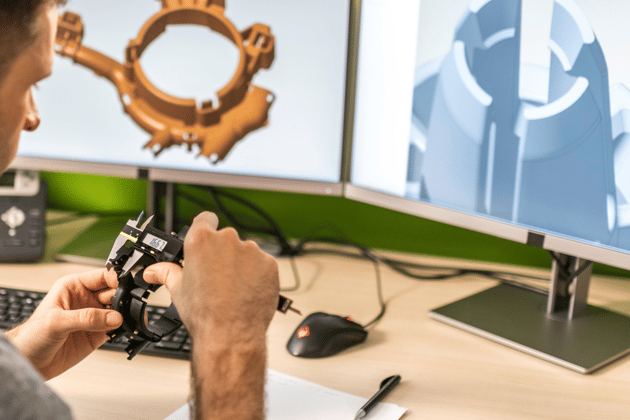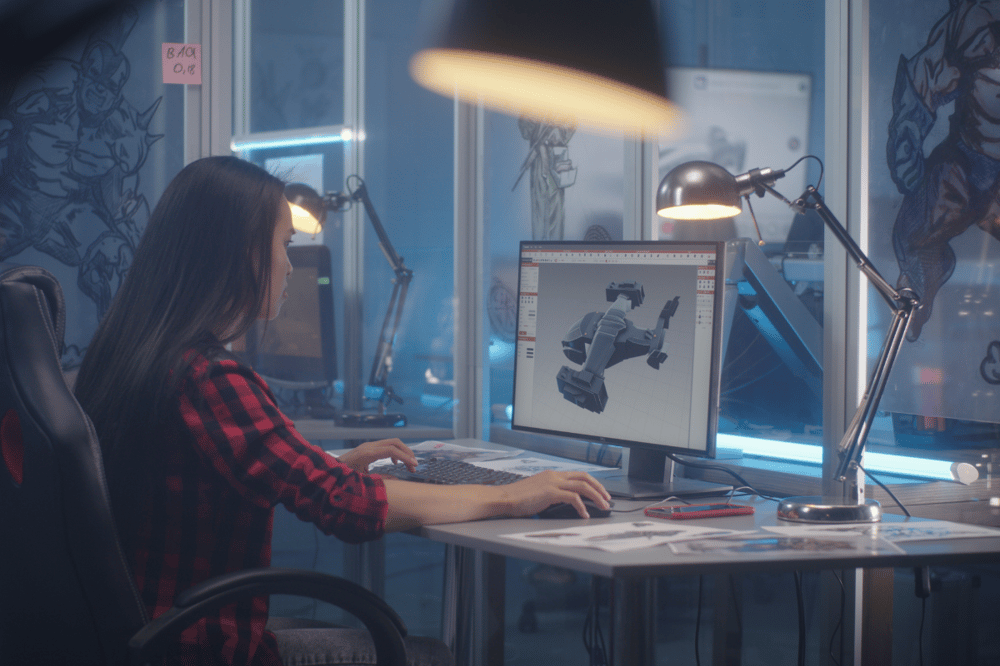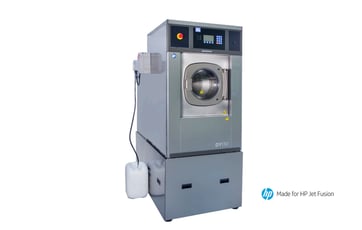3D printing
Leggi di più
The pigmentation process in 3D printing
The pigmentation process in 3D printing allows to give an aesthetic improvement to the piece...

3D modeling is used across many industries—from film and video games to medical and industrial manufacturing. Unlike 3D scanning, which reconstructs the image of a real object into a digital form, 3D modeling involves creating an object from scratch within a dedicated CAD (Computer-Aided Design) software environment.
Let’s explore the three main 3D modeling techniques.
Parametric 3D modeling is the primary method used by designers and engineers to build prototypes and functional parts.
The 3D model is created within the software through a series of operations, called features, defined by specific attributes—i.e., parameters. By modifying these parameter values, you can change the outcome of a feature and thus adjust the 3D model. Common features include extrusion, revolution, loft, and sweep, which help shape the basic geometry.
Some features require an initial 2D or 3D sketch (sketched-features), while others can be applied directly to the model (applied-features). Parametric modeling also allows incorporating real-world object characteristics—such as physical and optical parameters, density, material, and more—into the design.
Another widely used technique is polygonal modeling, ideal for creating organic shapes and complex forms. This method uses a network of polygons—triangles, quads, octagons—to create a 3D mesh, a lattice of lines and shapes that defines the object.
Because it relies on polygons, surfaces and curved volumes in polygonal modeling are approximated rather than precisely defined as in other techniques.
A 3D object in a polygonal mesh is defined by five key elements:
Vertices
Edges
Faces
Normals
UV coordinates
Polygonal modeling is commonly employed in software such as Blender and Maya, and is often used in film and video game production to recreate characters, vehicles, weapons, and more.
Also known as B-spline modeling, NURBS modeling (Non-Uniform Rational B-Splines) uses mathematical curves to define object shapes instead of polygon meshes. NURBS effectively "bend" space, and is preferred for creating objects with precise, smooth, and uniform curved surfaces.
Although less commonly used than polygonal modeling, this technique is still important for applications such as design objects or prosthetics.
Digital sculpting is widely used by 3D designers in games and animation to create hyper-realistic, organic, and soft forms, as well as prototypes, conceptual sketches, and pieces for 3D printing.
This process requires more skill compared to polygonal modeling because it allows the creation of 3D objects as if working manually with real materials like clay or stone, using specialized software.

Choosing the right modeling technique is the first step to successfully realizing your 3D object. This decision should consider:
The type of object to be created
The complexity of its geometry
The required resolution

The pigmentation process in 3D printing allows to give an aesthetic improvement to the piece...
-1.jpg?height=230&name=NIUO_testate_articoli_blog%20(1)-1.jpg)
The 3D printing market is rapidly evolving, leading to a wider array of available materials. In...